
Table of Contents
In the digital age, the landscape of education has evolved dramatically, with e-learning platforms and online education systems becoming the norm rather than the exception. According to a report by Research and Markets, the global e-learning market is projected to reach $325 billion by 2025, underscoring the immense potential and demand for these learning management systems. But with this growth comes a challenge: how can we ensure that these platforms are not just tools for delivering content, but engaging, interactive spaces that truly enhance learning?
This article, ‘Building Engaging E-Learning Platforms: From Concept to Launch’, is your comprehensive guide to navigating this very question. We’ll delve into the intricacies of e-learning platforms, exploring what makes them engaging, and how you can create an online learning space that captivates and inspires. By the end of this piece, you’ll have a clear understanding of the key elements that drive user engagement, and a roadmap for transforming your e-learning platform into a dynamic, interactive hub of learning.
But before we dive into the nitty-gritty, let’s consider this: In a world where attention spans are shorter than ever, and distractions are aplenty, how can we ensure that our e-learning platforms stand out and truly engage learners? The answer lies in understanding the science behind engagement, and applying it to the design and functionality of our platforms. So, are you ready to take your e-learning platform from a mere content repository to an engaging, interactive learning experience? Let’s embark on this journey together.
Transforming Online Education with Interactive Learning Management Systems
In the dynamic landscape of education, the advent of interactive Learning Management Systems (LMS) has been a game-changer, particularly in the realm of online learning. These digital platforms, much like a virtual classroom, have evolved from mere content repositories to vibrant, interactive hubs that engage students and facilitate learning in unprecedented ways. Imagine an LMS as a bustling city, where each building represents a unique learning experience, and the streets are the pathways connecting these experiences. At the heart of this city lies the interactive core, where students can actively participate in discussions, collaborate on projects, and receive real-time feedback. This interactivity is not just about clicking buttons or dragging and dropping, but about fostering a sense of community, encouraging peer-to-peer learning, and providing personalized learning paths. It’s about transforming passive learners into active participants, turning the traditional one-way street of education into a two-way highway. With the integration of multimedia content, gamification elements, and adaptive learning algorithms, these systems are not only making learning more engaging but also more effective. They’re not just platforms; they’re learning ecosystems that adapt to the needs of the 21st-century learner. So, let’s embrace this transformation, for it’s not just about using technology in education, but about using it to redefine education itself.
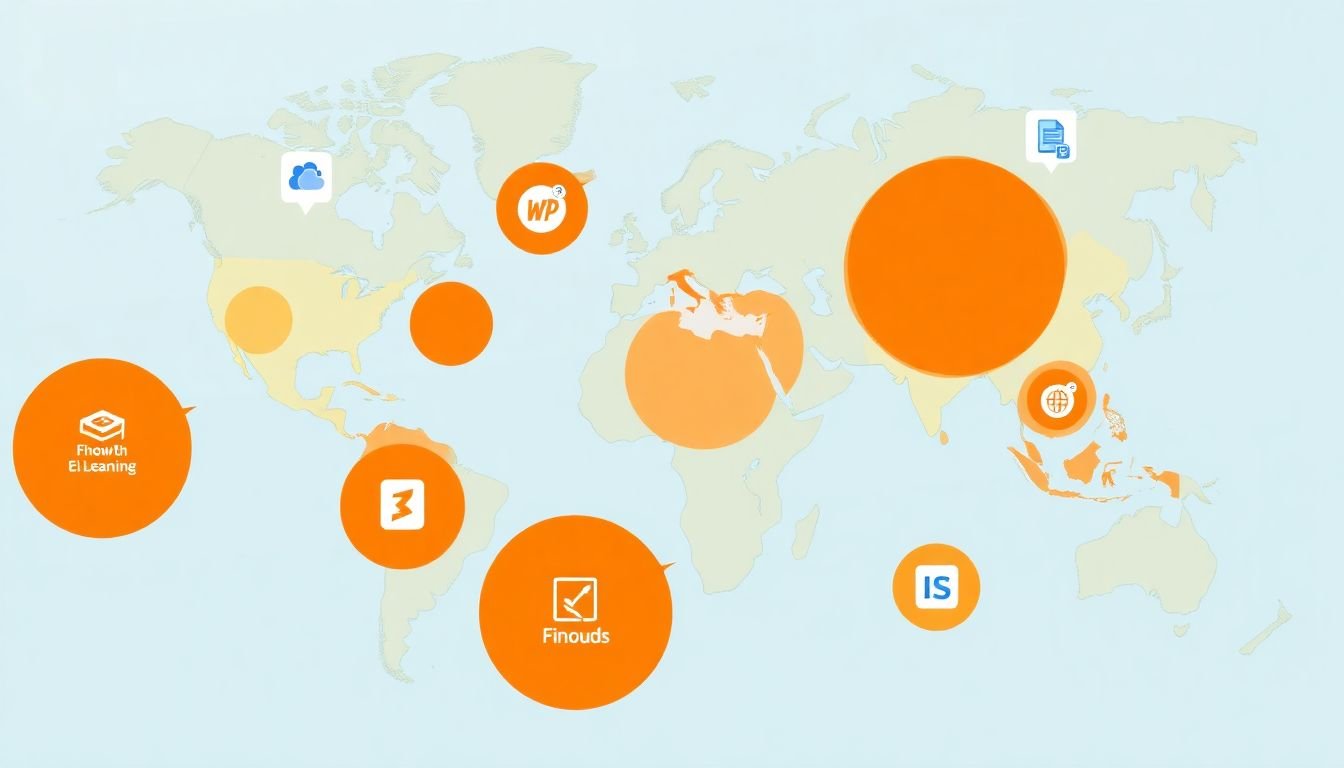
Understanding the E-Learning Landscape
The e-learning landscape has evolved significantly over the years, transforming from a niche concept to a global phenomenon. Today, it stands as a robust and dynamic ecosystem, driven by technological advancements and shifting educational paradigms. The growth of e-learning can be attributed to several factors, including increased internet penetration, the rise of mobile learning, and the global pandemic that accelerated the shift to digital platforms. According to a report by Research and Markets, the global e-learning market is expected to reach $325 billion by 2025, growing at a CAGR of 14.3% during the forecast period.
The need for engaging platforms in this landscape is paramount. With a plethora of options available, learners today expect more than just static content. They crave interactive, personalized, and immersive learning experiences. This has led to the rise of gamification, microlearning, and video-based content in e-learning.
Learning Management Systems (LMS) play a pivotal role in this context. They serve as the backbone of e-learning, providing a centralized platform for administering, documenting, tracking, reporting, and delivering educational courses, training programs, and learning resources. LMS platforms offer a wide range of features, including course creation and management, assessment tools, reporting and analytics, and integration capabilities with other tools and systems. Some popular LMS platforms include Moodle, Blackboard, and Canvas.
However, the e-learning landscape is not without its challenges. Issues such as digital divide, data privacy, and the need for continuous updates to keep up with technological advancements pose significant hurdles. Despite these challenges, the future of e-learning appears promising, with emerging technologies like AI, VR, and AR poised to revolutionize the way we learn and teach.

Defining Your E-Learning Vision
Defining your e-learning vision is a critical step in creating a successful and impactful online learning platform. This process begins with identifying your unique value proposition, the distinctive benefits that your platform offers to learners and educators. To do this, consider the following steps:
- Assess your platform’s strengths and weaknesses compared to existing e-learning solutions.
- Identify the specific needs and pain points of your target audience that your platform aims to address.
- Craft a clear and concise statement that communicates the unique value your platform provides.
Next, it’s essential to define your target audience. This involves understanding the demographics, learning styles, and goals of the individuals and institutions you aim to serve. Here’s how you can approach this:
- Conduct market research to gather data on potential users.
- Create detailed user personas to represent your ideal learners and educators.
- Segment your audience based on shared characteristics and needs.
Once you’ve identified your unique value proposition and target audience, it’s crucial to align your platform’s vision with your institution’s goals. This alignment ensures that your e-learning initiative supports and enhances your institution’s mission and objectives. Here’s how you can achieve this:
- Communicate your platform’s vision and value proposition to key stakeholders within your institution.
- Work collaboratively with these stakeholders to ensure your platform’s goals align with institutional priorities.
- Regularly review and update your platform’s vision to reflect changes in your institution’s goals and the evolving needs of your target audience.
By following these steps and maintaining a clear, aligned vision, you’ll create an e-learning platform that stands out, meets the needs of your target audience, and supports your institution’s goals.
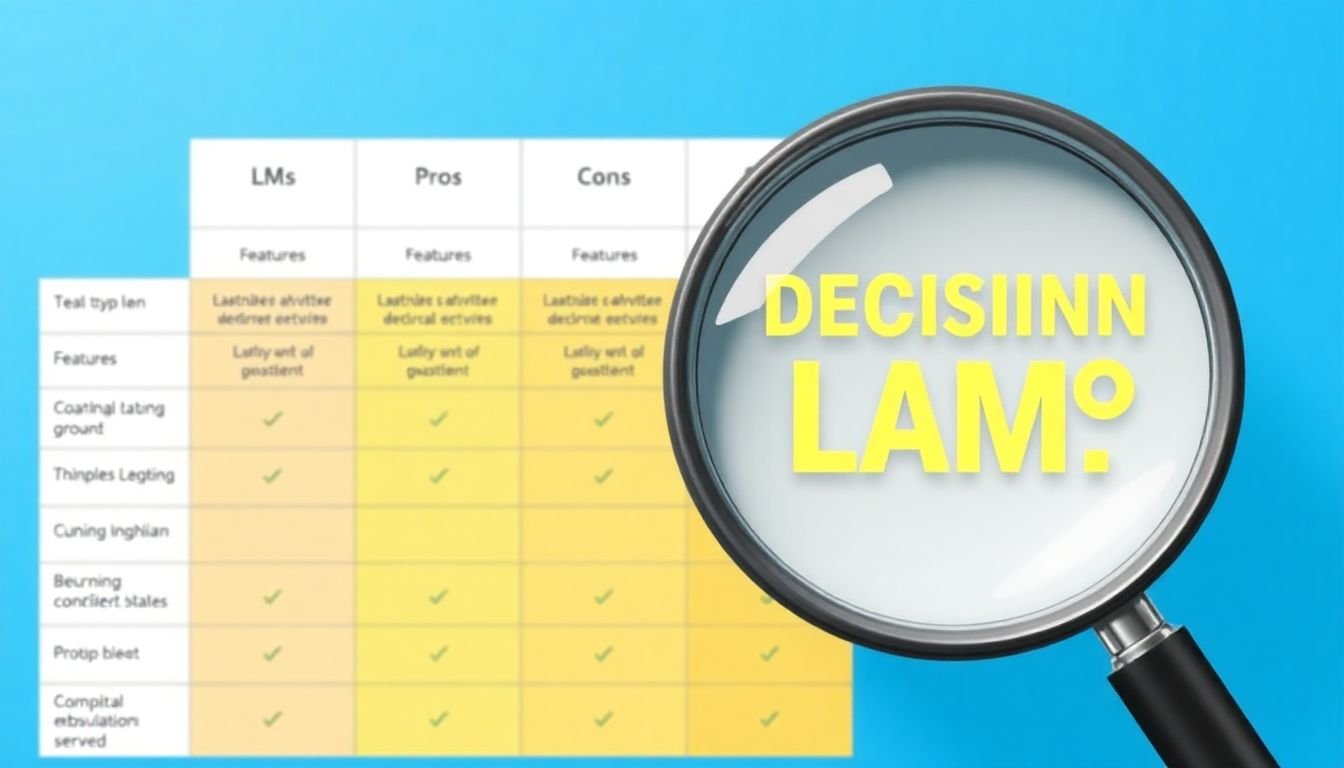
Choosing the Right LMS
Choosing the right Learning Management System (LMS) is a critical decision that can significantly impact your organization’s training and development initiatives. The market is flooded with various types of LMS, each with its unique features and advantages. Let’s explore some of the key types and factors to consider when selecting an LMS that fits your needs.
The first category is open-source LMS. These systems, like Moodle and Chamilo, are free to use and can be customized to meet specific organizational needs. They often have large communities of users and developers who contribute to their improvement. However, they may require significant technical expertise to set up and maintain.
On the other hand, commercial LMS offer a more straightforward, often user-friendly interface, and come with dedicated customer support. They can be more expensive, but they often provide advanced features like gamification, AI-powered analytics, and seamless integration with other tools. Examples include SAP Litmos and Docebo.
Cloud-based LMS, such as TalentLMS and Absorb LMS, are hosted on the vendor’s servers. They offer scalability, accessibility, and quick setup. However, they may have data security concerns and could be subject to vendor lock-in.
When selecting an LMS, consider the following factors:
- Budget: Determine what you can afford, considering both upfront costs and ongoing expenses.
- Features: Identify which features are must-haves and which are nice-to-haves. Consider both current and future needs.
- Ease of Use: Ensure the LMS is user-friendly for both administrators and learners.
- Integration: Check if the LMS can integrate with your existing tools, like HR systems or authoring tools.
- Security and Compliance: Ensure the LMS meets relevant data security standards and complies with regulations like GDPR.
- Vendor Reputation: Research the vendor’s track record, customer reviews, and customer support.
Lastly, consider trialing a few LMS before making a final decision. This hands-on experience can provide valuable insights into which system best fits your organization’s needs.
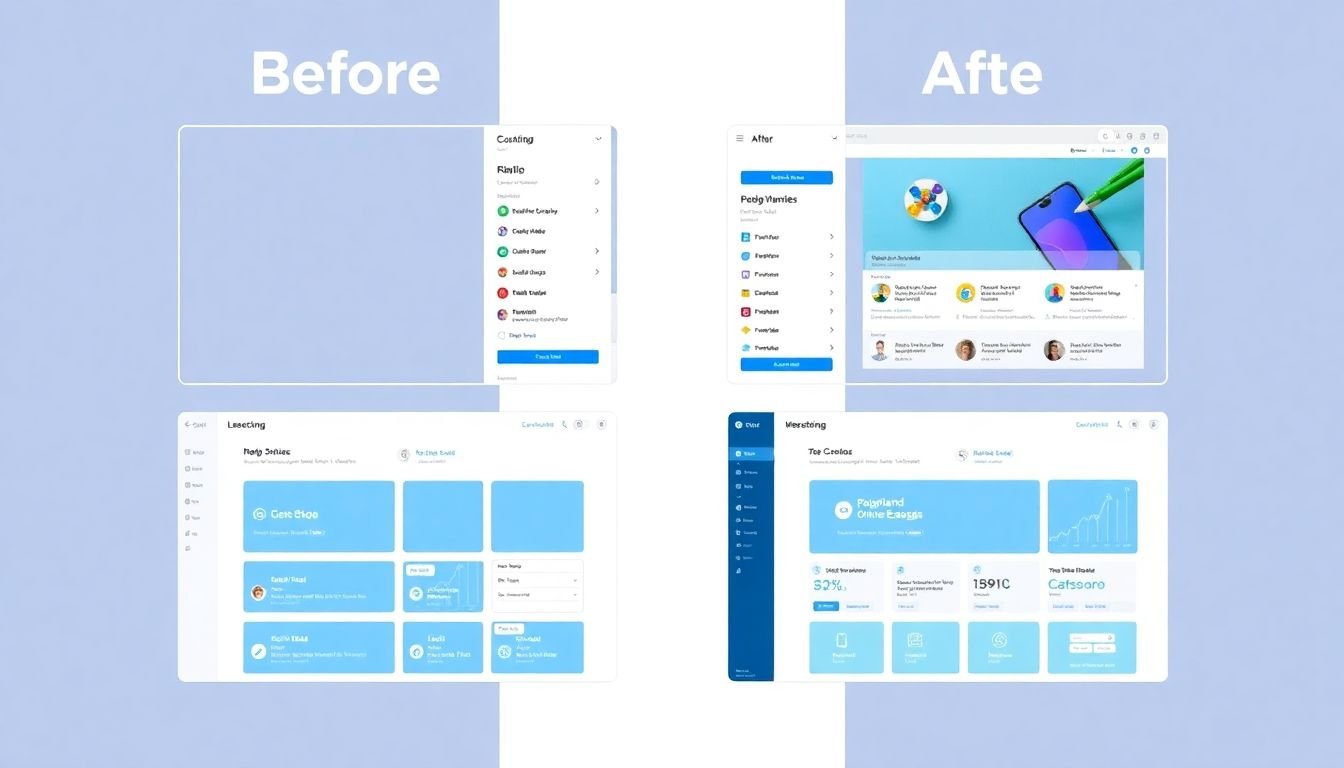
Designing an Engaging User Interface
In the realm of e-learning, the user interface (UI) and user experience (UX) are not merely aesthetic choices, but powerful tools that can significantly enhance or hinder the learning process. A well-designed UI/UX can guide learners, simplify complex tasks, and create an engaging environment that fosters curiosity and retention. Conversely, a poorly designed interface can cause confusion, frustration, and ultimately, a decrease in learning outcomes.
Imagine navigating a maze with no clear path or landmarks. This is what learning can feel like with a confusing, cluttered, or illogical UI. Therefore, the first step in designing an engaging user interface is to understand and anticipate the user’s journey. This involves creating user personas, mapping out learning paths, and conducting user testing to ensure the interface is intuitive and easy to navigate. Remember, the goal is not to dazzle users with flashy graphics, but to guide them seamlessly through the learning process.
Accessibility is another crucial aspect of UI/UX design in e-learning. Not all learners have the same abilities or use the same devices. Therefore, it’s essential to ensure that the interface is accessible to everyone. This includes using clear, legible fonts, providing alt text for images, and ensuring that the interface is navigable using only a keyboard. By making the learning experience accessible to all, we can break down barriers and open up education to a wider audience.
Finally, let’s not forget the power of visual appeal. A visually appealing interface can make learning more enjoyable and memorable. However, it’s important to strike a balance between aesthetics and functionality. The design should complement, not distract from, the learning content. This can be achieved through the use of whitespace, consistent color schemes, and relevant, high-quality images and graphics.
In conclusion, designing an engaging user interface in e-learning is not just about creating a pretty face. It’s about understanding and anticipating user needs, ensuring accessibility, and creating a visually appealing yet functional learning environment. By focusing on these aspects, we can transform e-learning from a passive, isolated experience into an interactive, engaging, and inclusive journey of discovery.
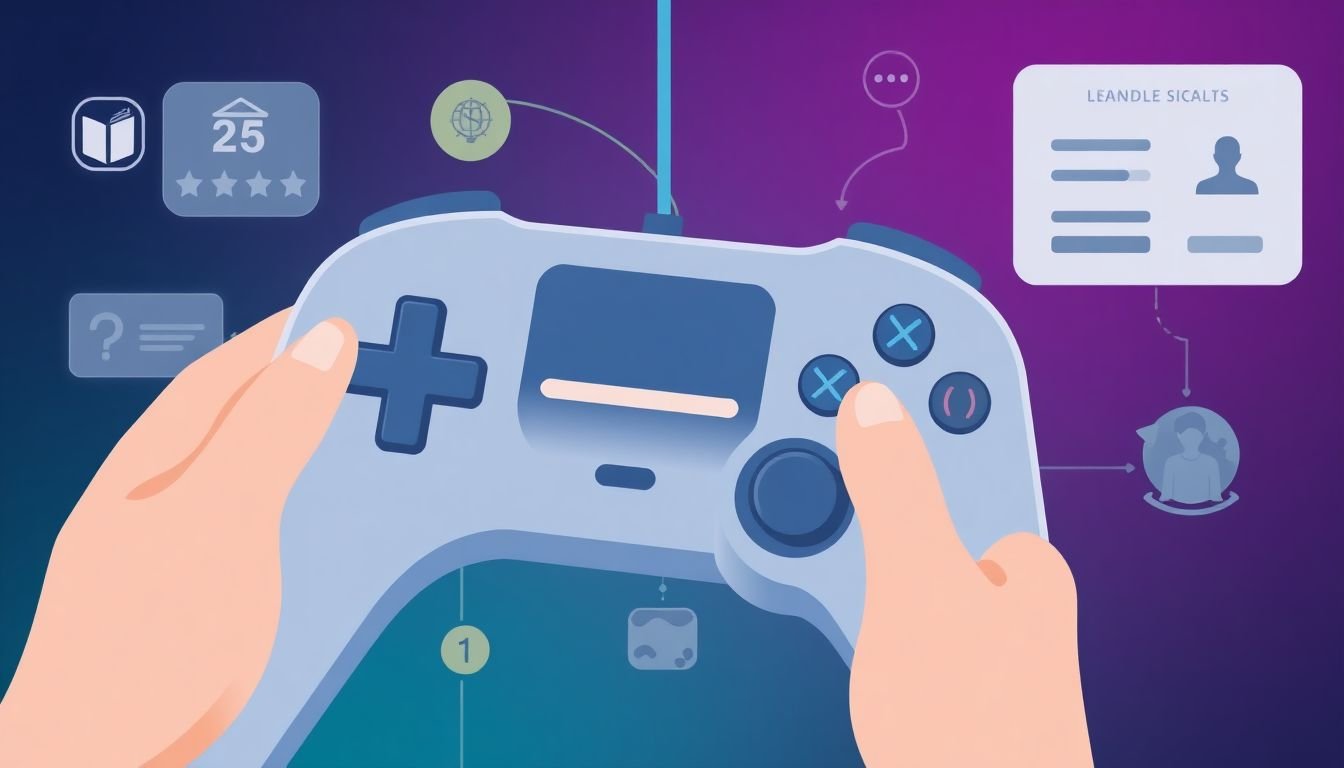
Gamification and Interactive Content
In the dynamic landscape of modern education and training, gamification has emerged as a powerful tool to boost learner engagement. By incorporating game-like features into non-game contexts, it transforms learning into an interactive, motivating, and enjoyable experience. This approach taps into our innate desire for competition, achievement, and social interaction, making it an effective strategy to enhance engagement and knowledge retention.
The role of gamification in boosting learner engagement is multifaceted. Firstly, it fosters intrinsic motivation by providing immediate feedback, setting clear goals, and offering rewards and recognition. Secondly, it promotes social learning through leaderboards, teams, and collaborative challenges. Lastly, it caters to diverse learning styles by offering interactive, hands-on experiences.
Interactive content is a cornerstone of gamification. It could range from quizzes and puzzles to simulations and virtual reality experiences. Tools like Articulate Storyline, Adobe Captivate, and H5P make it easy to create interactive content. These tools allow educators to build branching scenarios, drag-and-drop activities, and interactive videos. For instance, Articulate Storyline enables the creation of interactive eLearning courses with quizzes, games, and scenarios, while Adobe Captivate facilitates the development of responsive eLearning content.
Moreover, platforms like Kahoot! and Quizziz offer simple, yet engaging tools to create game-based learning activities. These platforms allow educators to create multiple-choice questions, set time limits, and even add images and videos to their quizzes. The real-time feedback and leaderboards in these tools foster a competitive and engaging learning environment.
In conclusion, gamification plays a pivotal role in boosting learner engagement by making learning fun, interactive, and motivating. The abundance of tools and platforms available today enables educators to create engaging content easily, transforming traditional learning into an exciting, game-like experience.
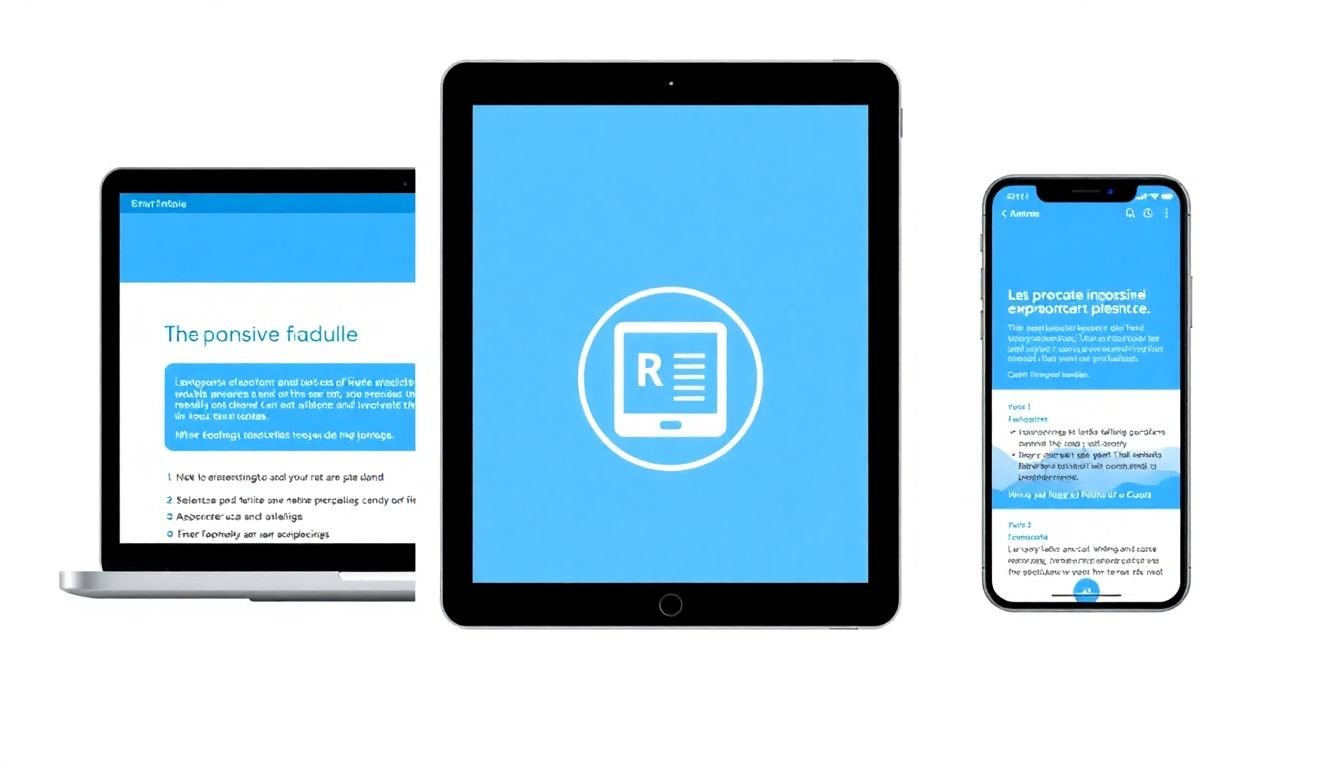
Mobile Learning and Responsive Design
In the digital age, mobile learning has emerged as a transformative force, reshaping how we approach education and skill development. With the ubiquity of smartphones and tablets, learning is no longer confined to traditional classrooms or desktop computers. Instead, it’s become a portable, always-available experience. This shift is particularly significant in today’s context, where flexibility and adaptability are paramount. Mobile learning allows individuals to learn at their own pace, in their preferred environment, and at times that suit their schedules. It also democratizes education, making it accessible to a broader audience, regardless of their location or circumstances.
To ensure your learning platform caters to this mobile-first world, responsiveness and accessibility are key. Responsive design is not just about making your platform look good on different devices; it’s about creating an optimal learning experience across various screen sizes and orientations. Here are some steps to achieve this:
- Understand Your Audience: Research the devices and browsers your learners use to access your platform. This will help you prioritize your design efforts.
- Use a Mobile-First Approach: Design your platform with mobile devices in mind first, then scale up for larger screens. This ensures that your content is always accessible and readable on smaller screens.
- Ensure Touch Targets Are Large Enough: On mobile devices, users interact with content using their fingers. Make sure buttons, links, and other interactive elements are large enough to tap accurately.
- Optimize Images and Media: Large images and videos can slow down loading times on mobile devices. Compress and optimize them to ensure fast loading speeds.
- Test Thoroughly: Use tools like Google’s Mobile-Friendly Test and BrowserStack to test your platform on a wide range of devices and browsers. Gather feedback from real users to identify and fix any usability issues.
By following these steps, you can create a learning platform that’s not just responsive, but also engaging, accessible, and future-proof.
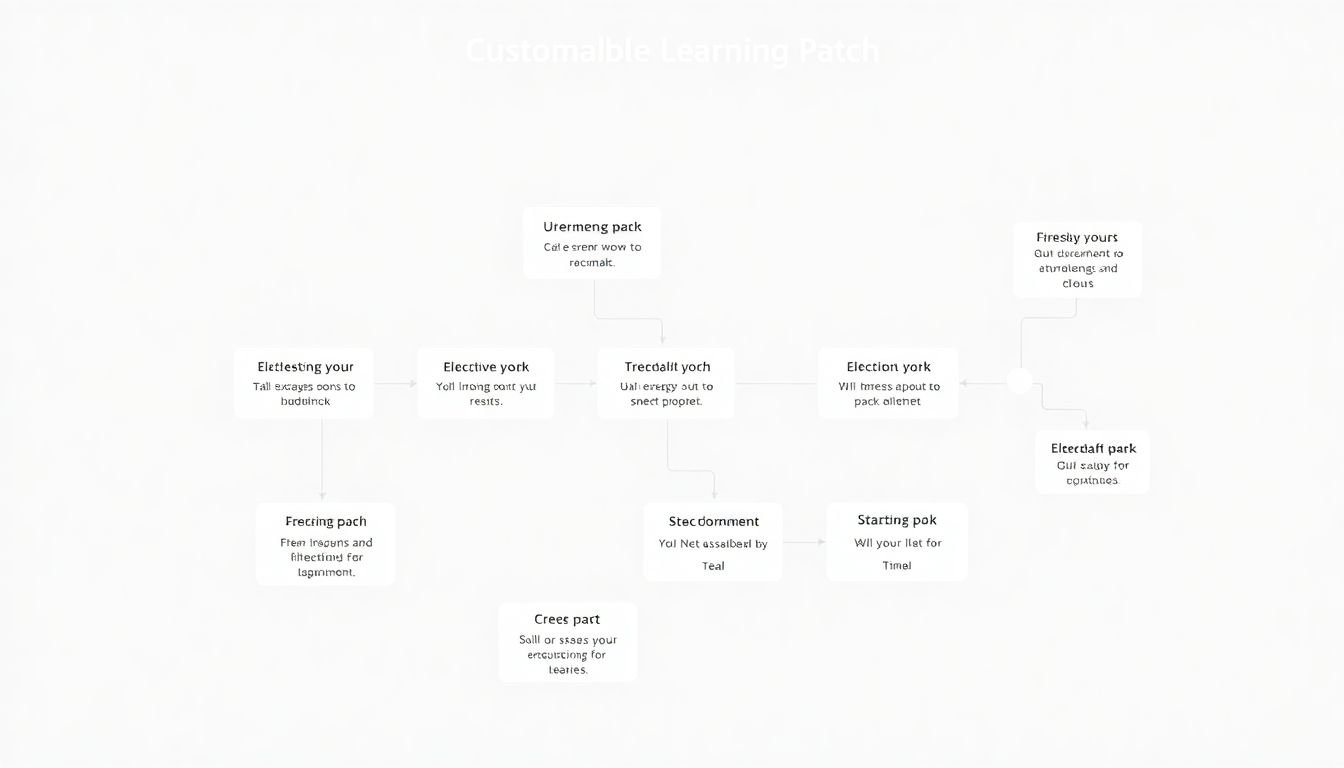
Personalization and Adaptive Learning
In the dynamic landscape of e-learning, personalization and adaptive learning paths have emerged as powerful tools to enhance student engagement, improve learning outcomes, and cater to diverse learning needs. By tailoring educational content and experiences to individual learners, these features create a more inclusive and effective learning environment.
The benefits of personalized and adaptive learning are manifold. Firstly, they promote student autonomy and self-paced learning, allowing individuals to progress at their own speed and in their preferred style. This not only boosts confidence but also fosters a sense of ownership over one’s learning journey. Secondly, these features enable educators to provide targeted feedback and support, addressing each student’s unique strengths and areas of improvement. This personalized approach can significantly enhance learning gains and reduce achievement gaps.
Implementing personalized and adaptive learning paths on your e-learning platform involves several strategic steps. Firstly, it’s crucial to gather and analyze data on student performance, learning styles, and preferences. This can be achieved through pre-assessments, quizzes, and user analytics. Secondly, leverage this data to create adaptive learning paths that adjust the difficulty and content of lessons based on each student’s proficiency level. This can be done using algorithms that automatically adjust the complexity of tasks or recommend relevant resources.
Another key strategy is to incorporate interactive and multimedia content that caters to different learning styles. This could include videos, podcasts, infographics, and games. Additionally, consider providing personalized recommendations for additional resources or learning activities based on a student’s interests and learning pace. Lastly, foster a culture of continuous feedback and reflection by encouraging students to track their progress and reflect on their learning journey. This can be facilitated through features like progress trackers, learning journals, and peer-to-peer feedback tools.
In conclusion, personalization and adaptive learning paths offer a wealth of benefits for both students and educators. By implementing these features strategically on your e-learning platform, you can create a more engaging, effective, and inclusive learning experience that truly caters to the unique needs and aspirations of each learner.

Integrating Social Learning and Collaboration
In the dynamic landscape of e-learning, social learning and collaboration have emerged as indispensable pillars, fostering interactive, engaging, and effective learning experiences. Social learning, a concept rooted in the belief that people learn from one another, is amplified in the digital realm, where learners can connect, share ideas, and grow together. Collaboration, on the other hand, encourages collective problem-solving, knowledge sharing, and peer-to-peer support, creating a robust learning community.
To nurture these aspects on our e-learning platform, we’ve integrated a suite of tools and features designed to facilitate interaction, communication, and teamwork. Firstly, our platform hosts discussion forums and chat rooms, providing spaces for learners to engage in meaningful conversations, ask questions, and share insights. These features not only promote social learning but also create a sense of community, making learners feel supported and connected.
We’ve also incorporated group projects and collaborative tasks, allowing learners to work together towards common goals. These activities are supported by real-time document editing, shared whiteboards, and video conferencing tools, ensuring seamless collaboration regardless of geographical boundaries. Additionally, our platform integrates gamification elements, such as leaderboards and badges, to encourage friendly competition and engagement.
To foster a culture of peer-to-peer learning, we’ve implemented a mentorship program that pairs learners based on their skills and interests. This program, along with user-generated content and peer review features, empowers learners to teach and learn from each other, reinforcing the principles of social learning. Furthermore, our platform offers integrated social media sharing options, allowing learners to share their progress, achievements, and insights with their networks, thereby extending the learning experience beyond the platform.
In essence, our e-learning platform is designed to be more than just a repository of learning materials. It is a vibrant, interactive space where social learning and collaboration thrive, making learning a engaging, supportive, and rewarding experience.
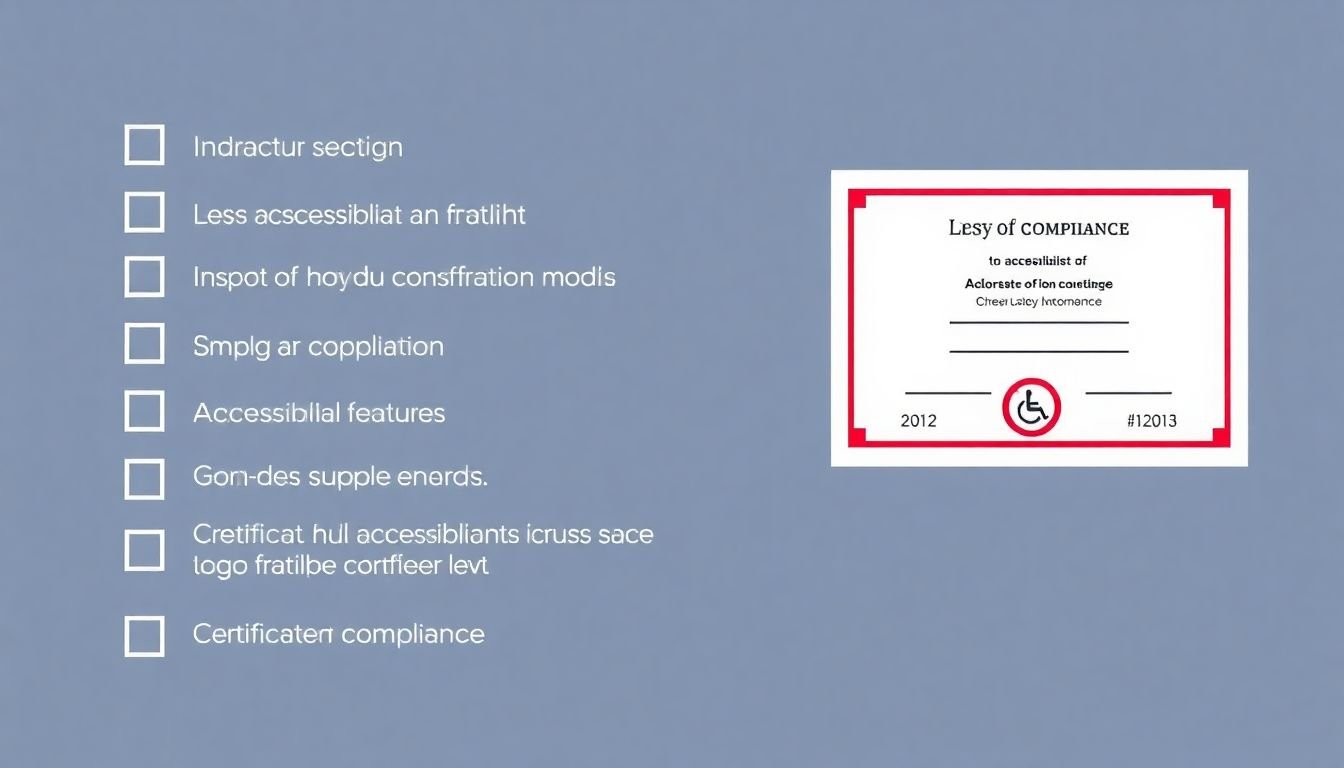
Ensuring Accessibility and Compliance
Ensuring accessibility in e-learning is not just a legal requirement, but a moral imperative that opens doors to education for all. Accessibility, in this context, refers to designing learning platforms and content that can be used by individuals with diverse needs, including those with visual, auditory, physical, speech, cognitive, and neurological disabilities. This inclusivity ensures that no learner is left behind due to barriers created by the digital divide.
The Web Content Accessibility Guidelines (WCAG) and Section 508 of the U.S. Rehabilitation Act are key standards that guide us in achieving this goal. Here are some guidelines to make your e-learning platform compliant:
- Alternative Text for Images: Provide alternative text for images to aid screen readers in describing the image to visually impaired users.
- Keyboard Accessibility: Ensure all functionality can be accessed using only a keyboard, as some users may not be able to use a mouse.
- Color Contrast: Use sufficient color contrast to make text and other visual elements easily distinguishable for users with low vision.
- Captions and Transcripts: Provide captions and transcripts for audio and video content to make it accessible to users who are deaf or hard of hearing, and those with cognitive impairments.
- Clear Layout and Navigation: Use clear and consistent layout and navigation to help users with cognitive impairments understand and interact with the content.
- Compatibility with Assistive Technologies: Ensure your platform is compatible with assistive technologies such as screen readers, braille displays, and switch control devices.
By following these guidelines, we can create e-learning platforms that are not only compliant with relevant standards but also truly accessible and inclusive, empowering all learners to reach their full potential.
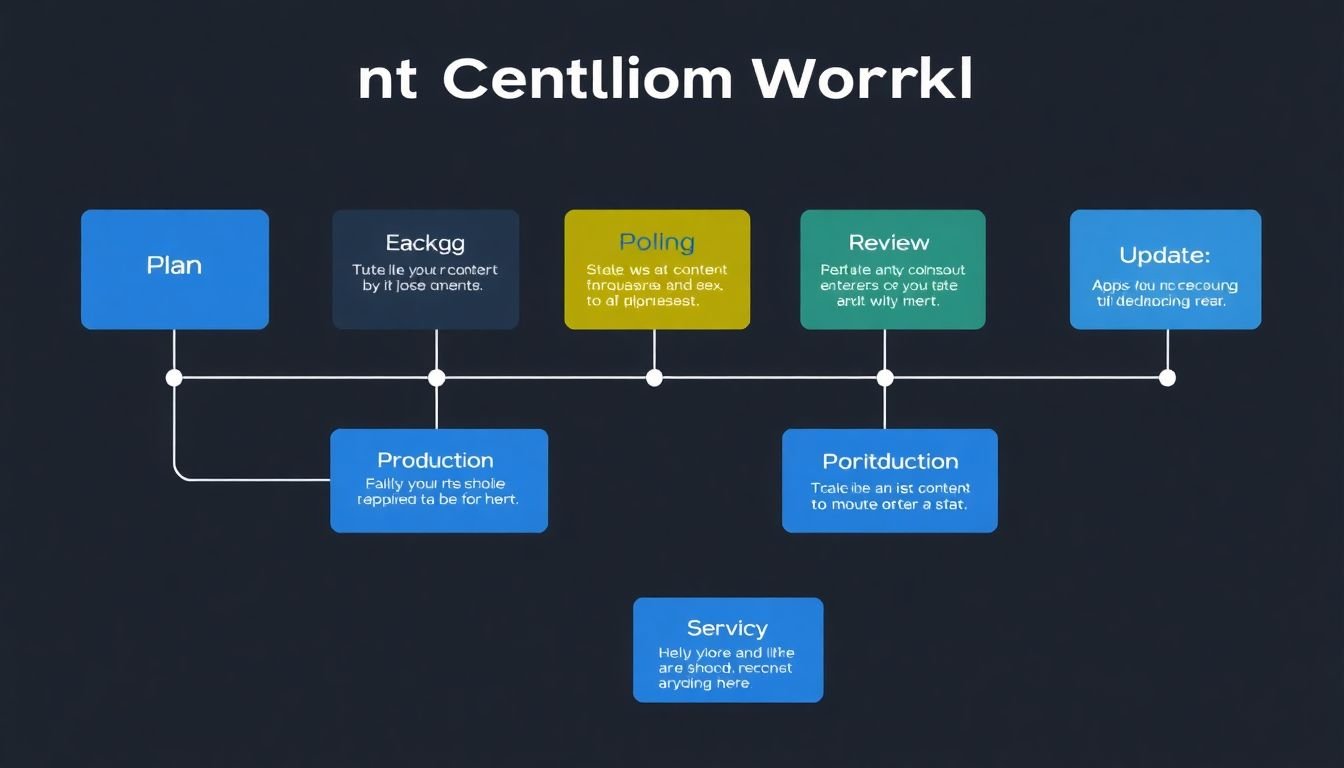
Content Creation and Curation
Content creation and curation are two sides of the same coin, both crucial in the realm of learning and development. Let’s dive into each, starting with creation.
Creating high-quality learning content is an art that combines understanding, creativity, and a dash of playfulness. Begin by identifying your audience’s needs and knowledge gaps. This is your roadmap, guiding you to create content that’s relevant and valuable. Next, structure your content in a way that’s easy to digest. Break down complex topics into manageable chunks, use clear language, and incorporate multimedia to cater to different learning styles.
Now, let’s talk about curation. In today’s information overload, curating high-quality content is like finding a needle in a haystack. Start by setting clear criteria for what makes content ‘high-quality’. This could be accuracy, reliability, relevance, or a combination. Use reputable sources and don’t shy away from citing them. Remember, curation isn’t just about gathering information, it’s about adding value. So, provide context, summarize key points, and even add your own insights.
Keeping content up-to-date and relevant is a continuous process. Here are some strategies:
- Regularly Review: Set aside time to review and update your content. This could be monthly, quarterly, or annually, depending on how fast your topic evolves.
- Follow Key Influencers: They often share the latest trends and developments in their field.
- Engage with Your Audience: Their feedback can provide valuable insights into what’s working and what’s not.
- Stay Updated Yourself: Keep learning and stay informed about new developments in your field.
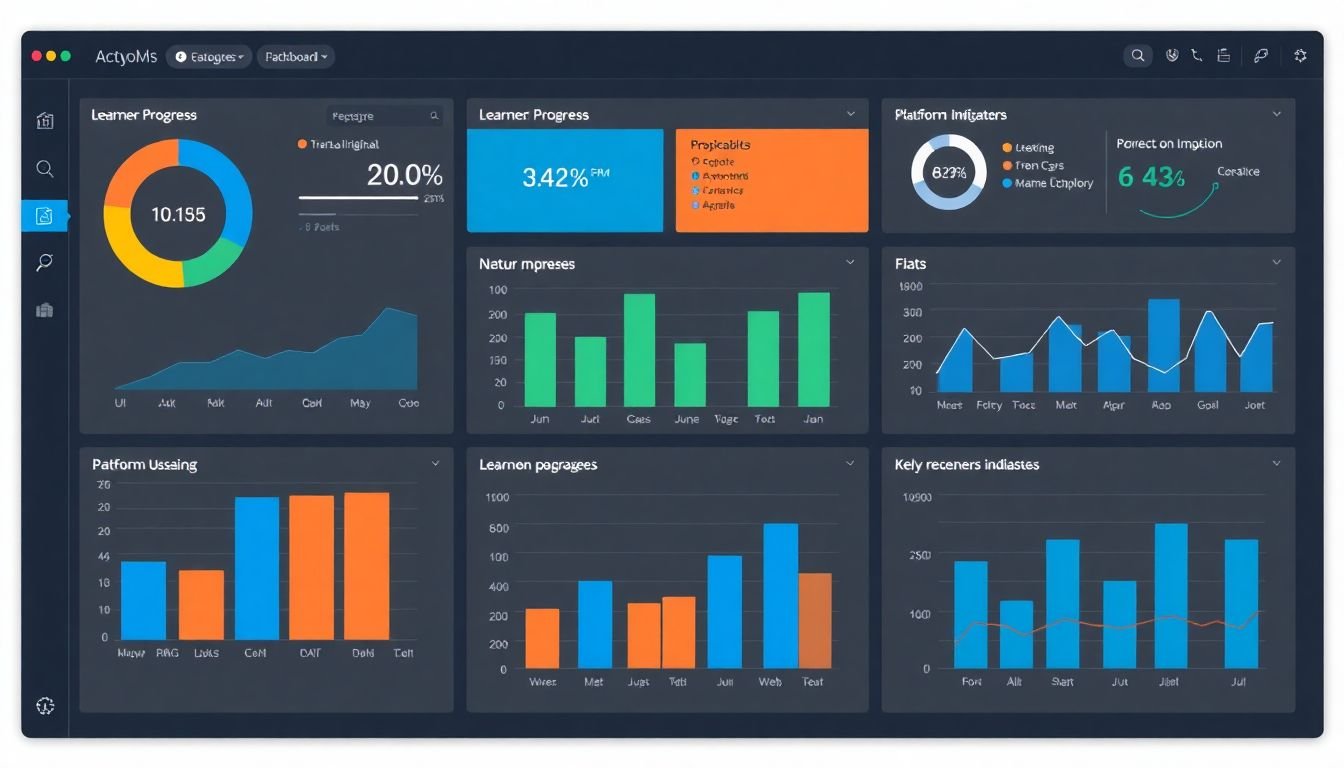
Assessment and Analytics
In the dynamic realm of e-learning, assessment and analytics play an indispensable role, much like a navigator’s compass, guiding educators and learners alike through the digital landscape. These tools are not merely about measuring performance; they are about understanding learning patterns, identifying areas of improvement, and fostering a data-driven approach to education.
The importance of assessment and analytics in e-learning cannot be overstated. They provide a window into the learning process, enabling instructors to tailor their teaching methods to suit individual learning styles and needs. By tracking learner progress, educators can identify knowledge gaps, provide timely interventions, and ultimately enhance learning outcomes.
Moreover, analytics also shed light on the performance of the e-learning platform itself. By analyzing user engagement, course completion rates, and other metrics, institutions can make informed decisions about platform design, content creation, and resource allocation. This data-driven approach can lead to improved user experience, increased learner satisfaction, and better return on investment.
To track learner progress and platform performance, several tools and strategies can be employed. Learning Management Systems (LMS) often come equipped with built-in analytics tools that can track learner activity, quiz scores, and course completion rates. Some popular LMS platforms with robust analytics features include Blackboard, Canvas, and Moodle.
In addition to LMS analytics, there are standalone tools like Google Analytics for Education, which can provide insights into user behavior on the learning platform. For tracking learner progress, tools like MasteryConnect, Edmentum, and Pearson’s Learning Management System offer detailed analytics on student performance.
Strategies for effective use of assessment and analytics include regular data review to identify trends and patterns, using data to inform instructional strategies, and communicating data-driven insights to learners to encourage self-reflection and goal-setting. By integrating these tools and strategies into e-learning, we can create a more personalized, effective, and engaging learning experience.

Launching and Marketing Your E-Learning Platform
Launching and marketing your e-learning platform is an exciting journey that involves strategic planning, creative execution, and continuous engagement. Let’s dive into a step-by-step guide to help you successfully launch and promote your e-learning platform.
1. Define Your Unique Value Proposition (UVP)
Before you dive into the technical aspects, it’s crucial to understand what makes your platform unique. Identify your target audience and what sets your platform apart from competitors. This could be your content, delivery method, pricing, or exceptional features. Your UVP will serve as the foundation for all your marketing efforts.
2. Develop a Minimum Viable Product (MVP)
Start with a basic version of your platform that includes essential features. This allows you to gather feedback, make improvements, and save resources. Your MVP should include:
- User registration and profile creation
- Course catalog and search functionality
- Learning management system (LMS) features
- Basic analytics and reporting
3. Build a Website and Optimize for SEO
Create a user-friendly, mobile-responsive website that showcases your platform’s features and benefits. Optimize your website for search engines to attract organic traffic. Use relevant keywords, meta descriptions, and alt tags to improve your search engine rankings.
4. Content Creation and Curation
Develop high-quality, engaging content that caters to your target audience. This could include video lessons, articles, infographics, and interactive quizzes. Consider partnering with industry experts and influencers to create exclusive content.
5. Pre-Launch Marketing
Build anticipation and generate buzz around your platform before the launch. Here are some strategies to consider:
- Create a landing page and collect email addresses for early access
- Share sneak peeks and behind-the-scenes content on social media
- Engage with your audience through blog posts, webinars, and Q&A sessions
- Collaborate with influencers and industry leaders for promotions
6. Launch and Post-Launch Marketing
Once your platform is live, focus on attracting and retaining learners. Here are some effective marketing strategies:
- Leverage social media platforms to engage with your audience and promote your content
- Implement content marketing strategies, such as blogging and guest posting
- Offer free trials, discounts, or bundle packages to attract new learners
- Leverage email marketing to nurture relationships and keep learners engaged
- Monitor and analyze user data to personalize learning experiences and improve platform features
7. Continuous Improvement and Engagement
Regularly collect feedback from learners and use it to improve your platform. Keep your content fresh and relevant by adding new courses and updating existing ones. Engage with your learners through gamification, rewards, and recognition programs to foster a sense of community and encourage continuous learning.
By following these steps and staying committed to your learners, you’ll be well on your way to successfully launching and marketing your e-learning platform.

Continuous Improvement and Platform Evolution
In the dynamic landscape of e-learning, continuous improvement is not just an advantage, but a necessity. It’s the key to keeping your platform relevant, engaging, and effective in an ever-evolving educational environment. Continuous improvement is about more than just fixing bugs or adding new features; it’s about understanding and adapting to the changing needs of your users.
The first step in this process is gathering user feedback. This can be done through various strategies. One effective method is to implement a feedback system within the platform itself. This could be a simple ‘thumbs up/thumbs down’ rating system, or a more detailed survey that pops up after a user completes a course or module. Another strategy is to engage with users directly, through email newsletters, social media, or even live chat sessions. This not only provides valuable insights but also fosters a sense of community and engagement.
Once you’ve gathered this feedback, it’s crucial to analyze it effectively. This could involve identifying common issues or suggestions, or using data analytics to understand user behavior and preferences. From here, you can start to evolve your platform. This could mean anything from improving the user interface to adding new features or even overhauling the learning management system (LMS) itself.
However, it’s important to remember that evolution should be a continuous process, not a one-off event. This means regularly reviewing and updating your platform, based on new feedback and emerging trends in e-learning. It also means being open to change and willing to adapt, even if it means letting go of features or systems that aren’t working.
In essence, continuous improvement in e-learning is about listening to your users, learning from their experiences, and using that knowledge to make your platform better. It’s a journey, not a destination, and one that can lead to a more engaging, effective, and successful e-learning platform.